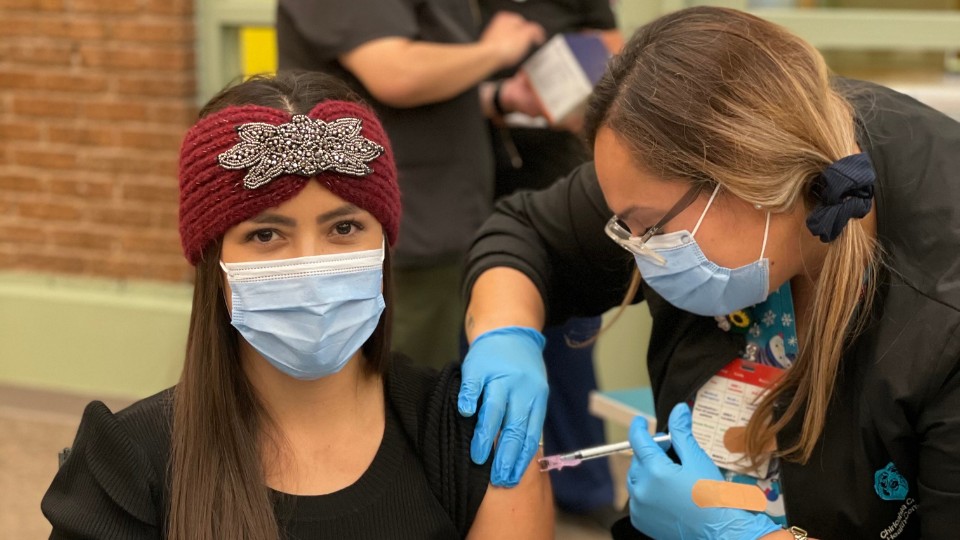It feels like we are turning the corner. There are now three effective COVID vaccines and pharmaceutical companies are increasing production to create enough supply to vaccinate all U.S. adults by the end of May.
Yet in underserved neighborhoods, home to many families of color, it’s taking longer to get around that corner. In every state that is reporting vaccine demographics, Black individuals are vaccinated at a lower rate than their percentage of the population. The inequities for Black and Latinx people are even greater if you compare vaccination rates with COVID-19 infection or death rates.
As many desperately seek solutions to vaccine equity, we are missing an important one embedded in these very communities that need the most help.
Community health centers, more formally called Federally Qualified Health Centers, are organizations that work every day to overcome health inequities with culturally-sensitive care, trusted healthcare providers, and language-appropriate services. The more than 1,400 community health centers across the country are one of the most important means of reaching deeply and cost-effectively into communities of color and in rural areas to ensure the most vulnerable to the pandemic in this country have access to the vaccine.
But they are facing enormous challenges that existed before the pandemic and have only been compounded by it.
The healthcare workforce across the country, already experiencing shortages before the pandemic, is now stretched too thin, has suffered personally and professionally, and doesn’t know when normal will return. Lisa Dettling, executive vice president at Nevada Health Centers, echoed those sentiments when she talked about adding vaccine distribution efforts. “The burnout, the overtime. How many weeks are we going to do this? How many months? How many years? It’s been very wearing on the team; however, while we can only guess about the duration of the pandemic, our employees and clinical providers have been absolutely amazing and dedicated to the task of providing community-based health care and administering vaccines.”
In rural communities in places such as Arizona and Puerto Rico, the already limited nursing workforce was further diminished when some with children made the difficult decision to stop working in order to stay home to help with remote learning. Health centers in communities with health professional shortages before the pandemic could not recruit additional staff for COVID testing and vaccination but rather were forced to pay overtime salaries that were not budgeted or reimbursable.
Community health centers are also facing major distribution hurdles. In the first few months of the vaccine rollout, supply has been unpredictable at the over 20 clinics that Children’s Health Fund supports across the country. Deborah Snider, executive director of the Bronx Health Collective explained it this way: “I can’t imagine that every health center that is administering vaccines doesn’t feel the same way about this uncertainty regarding supply. The behind-the-scenes logistics are so complicated. Schedules need to be opened, staffing needs to be coordinated, patients need to get scheduled, and there are issues of social distancing and how many other types of appointments are already scheduled. Not knowing if or when you will get a supply of vaccines leaves little time to work through these logistical issues.”
Efforts to do mass-vaccination drives are expensive and for some, financially untenable. Darlene Melk, chief medical officer for Chiricahua Community Health Centers, Inc. in Arizona, shared her experience with community vaccine drives, “We started offering a couple of big drive-thru immunization events. But when we sat back and calculated the number of people that came and volunteered their time, and how many individuals we actually vaccinated, and the cost, it just wasn’t realistic to continue. Now we offer vaccines in the clinics.” Even in the clinic the federal reimbursement rates, often as low as $13 to $17, do not begin to cover costs. Typically a single day of vaccine outreach exceeds their reimbursement by $1,500 and is not budgeted. Adding to their financial challenges are the tremendous losses in income that these clinics experienced early in the pandemic due to dramatic decreases in routine healthcare services because of safety concerns.
To achieve herd immunity against the coronavirus, it was recently estimated that between 70% and 90% of the U.S. population need to be immune to COVID-19 either through vaccination or having survived an infection. That means we need to get vaccines into arms as quickly as possible.
But the barriers to receive the vaccine are formidable for individuals who lack internet access or ease with online scheduling, who live in rural communities potentially hours away from a distribution hub, or who have learned to mistrust the healthcare system or the government. And, providing vaccines within communities facing access barriers, such as in homeless shelters and encampments, at meat processing plants, at seasonal agricultural workers’ housing, and at trusted venues such as churches and community centers makes logistic sense but presents formidable financial burdens on community health centers.
Vaccines should be offered in the evenings and weekends to accommodate worker schedules–times that typically cost more due to staff overtime and increased facility fees. Clerical support for registration is needed for those impacted by the digital divide. Transportation barriers are lessened by taking vaccines into rural and isolated communities.
Not only are significant outreach efforts required to obtain herd immunity, but they are also fundamental to addressing the inequities in vaccine distribution. But that outreach comes at a cost that is greater than $13 or $17 per shot. A cost that health centers can not bear alone.
As coronavirus variants gain steam and communities of color continue to be the hardest hit in every way, we need our government to ensure consistent and sufficient vaccine supplies and financial support to community health centers. They are the backbone of underserved communities and one of the most effective salvos to fight back the coronavirus and start the path to recovery.








